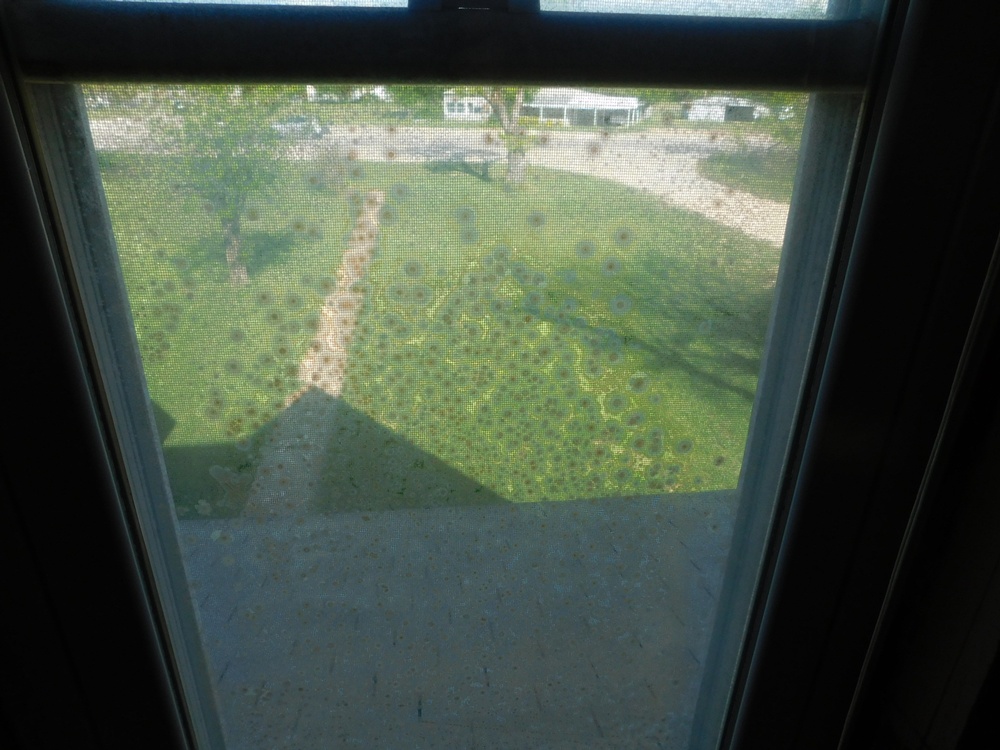Failed Thermopane Windows

This blog is the second of three that discuss windows.
Windows have come a long way over the years. Sixty years ago, we had windows with one pane of glass that basically kept the wind out of the house, while letting light and a lot of heat or cold in. Now we have double and triple-paned windows with inert gases between the glass and low emissivity coatings that can block as much as 97% of the infrared and ultraviolet rays from the sun. Today’s windows have about four times the insulating value as the single-paned windows that we used to have in our homes. Yet, despite all the advances in windows over the years, they are not perfect.
Have you ever noticed moisture in between the panes of glass in the double-paned windows in your home? Or do you have a white cloudy buildup in a window that makes it difficult to see through? If you have seen either of these phenomena in you home, then your thermopane window has failed. As a home inspector, I have seen this hundreds of times. In a lot of homes, if I see one failed window, I will see several. This is often because the windows are of low quality or they were improperly installed which makes failure much more likely. Other times, there are only one or two failed windows in a home. There are many things that cause thermopane windows to fail, but I’m not going to discuss those here since I discussed those in my previous blog. What I want to discuss is what to do about it once it happens.
First, what is a thermopane window and what do they do? Thermopane windows are made with two or three layers of glass that are separated by a space filled with a gas, commonly argon. Since glass is such a good conductor of heat, the temperature of a single pane of glass will be the same on the inside of the home and on the outside. This is why you can see water beading up on single pane windows in the winter time – because the glass is cold inside the house and causes the moisture in the air to condense on the glass. By putting a gas (preferably one that does not conduct heat well) between two panes of glass, the insulating value of the window goes way up. If a third layer of glass is added, the insulating value goes up even more. Studies show that double-paned windows only allow about 10% of the energy (heat) to pass through the glass. Triple-paned windows only allow about 3% of the energy to pass through the glass.
During the manufacturing process, the air is removed from between the panes of glass, a desicant is installed to remove any residual moisture, and then the space is filled with the gas. Once the window is installed, it is subject to the environment which is hard on windows. Sometimes the heat of the sun beating on the window daily causes the seal to eventually fail. Sometimes a manufacturing flaw or poor installation causes the seal to fail. Once a seal fails, air can get into the space between the panes of glass. The moisture in this air will eventually condense onto the glass, and that is the moisture that you see between the panes of glass. Over time, dirt or grime enters through the failed seal causing the permanent buildup that is often present.
There are some things that you can do to help prevent your window seals from failing or at least to prolong their life. Keep the sill areas clean of dirt, debris, and moisture. Do not use harsh cleaners on the windows as they can damage the seal and cause it to fail. Do not use a pressure washer to wash your windows as the pressure from the water can push the glass against the seal and cause gaps between the glass and seal.
So, if you have a window with a failed seal, what can you do? You have several choices. One, you can do nothing. A failed seal will lower the energy efficiency of the window only a small amount. It will cost more to fix or replace the failed seal than will be lost due to the energy savings, so it doesn’t make sense to replace the window just to recapture the energy savings. If you decide to do nothing, then you will have to deal with the annoyance of the moisture buildup in the window. Another option is to have the space between the panes of glass cleaned. This is done by drilling a couple of small holes in the glass and washing the interior of the glass. This fix will only last for a while as the seal is not repaired, and moisture will eventually build up again. Another option is to have the two panes of glass and seal (called integrated glass unit or IGU) replaced. This will essentially give you a new window. The cost of this is around $150 - $200. The last option is to have the entire window replaced. This was the subject of my previous blog. The cost of this is around $400 - $800, depending on the quality of the window.
Mike Morgan
325-998-4663
In my next blog, I’ll discuss some things to consider and questions to ask if you are in the market for new windows.